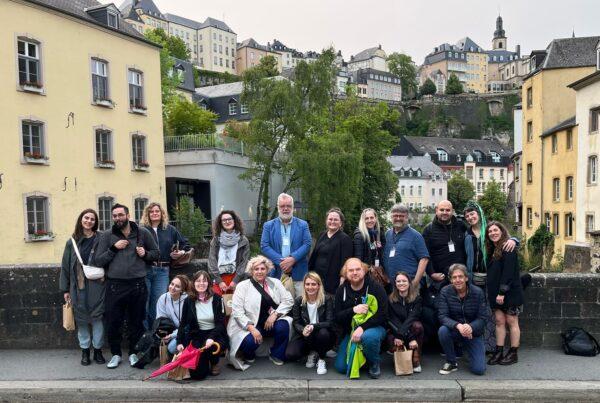The ASSITEJ Small Countries Network is very proud and happy to inform that their network is now a reality!
Structure of Network:
Members: The Network comprises ASSITEJ International members (national centres or individual members) from countries with a population under one million, which are for the time being:
ASSITEJ Luxembourg
ASSITEJ Cyprus
ASSITEJ Iceland
ASSITEJ Liechtenstein
Zigu Zajg (Malta)
Bradipoteatar (San Marino)
*If, at any point, there is a new ASSITEJ member from a country with a population of less than one million, it could join the Network after approval from the Board.
Board: The Network board comprises the presidents of its members. The board meets through Zoom every second month. It also meets with physical presence during ASSITEJ Congresses and Artistic Gatherings.
Council: The Council comprises all the board members of all the member organizations. The Council meets through Zoom once a year.
General Assembly: The General Assembly comprises all the members of all the member organisations. The General Assembly meets through Zoom once per year and in coffee sessions/other events organised by the Board.
Preparation for the meetings rotates between the National Centers.
Role in ASSITEJ International: The network is similar to the informal regional networks in ASSITEJ like the Iberoamerican Network or the Baltic-Nordic Network: A space for collaboration and exchange related to shared conditions or geographical proximity or linguistic familiarity. The Small Countries Network is not a formal member of ASSITEJ International like the ASSITEJ Networks.
Aims/Targets:
-To strengthen the relations between the smaller countries of the ASSITEJ community. -To share ideas, works and good practices.
-To collaborate on small or on large-scale projects, including campaigns, showcases, festivals or exchange programmes.
-To sponsor and support individuals and national centers in small countries to join the ASSITEJ international community.
Common Challenges of Small Countries in TYA:
-Limited budget for TYA productions.
-Limited audience.
-National Centres don’t have the resources (human and economic) that larger centres have.
-Artists from small countries don’t have as many opportunities as artists from larger countries to participate in international festivals and other events.
-Less touring opportunities in your own country because of limited numbers of theatres and other venues.
-Theatre infrastructure is often inferior to that of larger countries.
-Sponsorships for TYA are limited.
-The cultural sector of small countries is often linked to the cultural sector of larger, neighbouring countries.
-Matters relating to the language or languages we use in TYA.
Marketing and promotion:
-Logo
-Facebook page
-Instagram page
-Introductory video to be shared with other ASSITEJ members.





